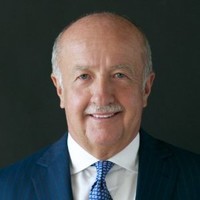- Video Library
- Daniel Levangie, CereVasc - Endovascularly Implantable CSF Shunt | LSI Europe '22
Daniel Levangie, CereVasc - Endovascularly Implantable CSF Shunt | LSI Europe '22

Daniel Levangie
Daniel Levangie is an experienced executive with senior operating experience in the field of medical devices and in vitro diagnostics. Mr. Levangie is currently the Chairman and Chief Executive Officer of Cerevasc, Inc. and co-founder and Managing Partner of ATON Partners, LLC, a Boston based private investment and management consulting firm. Most recently, Mr. Levangie was Chief Executive Officer of Dune Medical Devices and co-founder and Managing Partner of Constitution Medical Investors, Inc. (CMI) a Boston-based private investment and product development firm acquired by Roche Diagnostics Corporation in July 2013. Prior to that Mr. Levangie was Chief Executive Officer of Keystone Dental, Inc., a Warburg Pincus portfolio company involved in dental reconstruction technologies and Chairman of the Board of ev3.
Beginning in 1992 Mr. Levangie held a variety of executive management positions with Cytyc Corporation until the acquisition of Cytyc Corporation by Hologic, Inc. in October of 2007. Those positions included Executive Vice President and Chief Operating Officer, Chief Executive Officer and President of Cytyc Health Corporation, Executive Vice President and Chief Commercial Officer and President, Cytyc Surgical Products Division.
Prior to joining Cytyc Corporation in 1992, Mr. Levangie held a number of sales, marketing and management positions with Abbott Laboratories, North Chicago, IL.
Mr. Levangie resides in Boston, MA with his wife Joan, and is a member of the Board of Directors of Exact Sciences, Inc. and Dune Medical Devices, LTD. He previously served as Lead Director of Insulet Corporation and Director of Liposcience, Inc. Mr. Levangie, a graduate of the College of Pharmacy of Northeastern University in Boston, is a member of the Advisory Board of the Barnett Institute of Northeastern University and is a trustee of Excel Charter School.
Daniel Levangie
Daniel Levangie is an experienced executive with senior operating experience in the field of medical devices and in vitro diagnostics. Mr. Levangie is currently the Chairman and Chief Executive Officer of Cerevasc, Inc. and co-founder and Managing Partner of ATON Partners, LLC, a Boston based private investment and management consulting firm. Most recently, Mr. Levangie was Chief Executive Officer of Dune Medical Devices and co-founder and Managing Partner of Constitution Medical Investors, Inc. (CMI) a Boston-based private investment and product development firm acquired by Roche Diagnostics Corporation in July 2013. Prior to that Mr. Levangie was Chief Executive Officer of Keystone Dental, Inc., a Warburg Pincus portfolio company involved in dental reconstruction technologies and Chairman of the Board of ev3.
Beginning in 1992 Mr. Levangie held a variety of executive management positions with Cytyc Corporation until the acquisition of Cytyc Corporation by Hologic, Inc. in October of 2007. Those positions included Executive Vice President and Chief Operating Officer, Chief Executive Officer and President of Cytyc Health Corporation, Executive Vice President and Chief Commercial Officer and President, Cytyc Surgical Products Division.
Prior to joining Cytyc Corporation in 1992, Mr. Levangie held a number of sales, marketing and management positions with Abbott Laboratories, North Chicago, IL.
Mr. Levangie resides in Boston, MA with his wife Joan, and is a member of the Board of Directors of Exact Sciences, Inc. and Dune Medical Devices, LTD. He previously served as Lead Director of Insulet Corporation and Director of Liposcience, Inc. Mr. Levangie, a graduate of the College of Pharmacy of Northeastern University in Boston, is a member of the Advisory Board of the Barnett Institute of Northeastern University and is a trustee of Excel Charter School.

17011 Beach Blvd, Suite 500 Huntington Beach, CA 92647
714-847-3540© 2025 Life Science Intelligence, Inc., All Rights Reserved. | Privacy Policy







